Boosting Returning Customer Rates: 4 Strategies for Selling More While Spending Less
In the fast-paced world of e-commerce, the secret to sustainable growth isn’t just in attracting new customers—it’s in keeping them. With a staggering 5 times more cost associated with acquiring a new customer than retaining an existing one, savvy online businesses are shifting focus.
In this digital era, where competition is just a click away, understanding how to encourage repeat business is more crucial than ever. It’s not just about a one-time sale; it’s about cultivating a current customer base that chooses your brand time and again.
This boosts your bottom line and creates brand ambassadors who spread the word about your business organically.
What is a returning customer?
Imagine you’re running your dream online store. One day, a customer walks in and makes a purchase. But it doesn’t end there. They return, again and again, choosing your store over countless others on the web.
This repeat visitor, your returning customer, is more than just a number on your sales report – they’re the cornerstone to help you build a successful business.
Why are these returning customers the superstars of your sales world? It’s simple: they represent trust and satisfaction with what you offer. Loyal customers don’t just bring repeat business; they tend to spend 67% more than first-time customers.
That’s not just a sale; it’s a growing relationship impacting your bottom line.

But there’s more to it than just numbers. Returning shoppers often transform into brand advocates. They share their positive experiences with friends and family, amplifying your brand’s reach through the most trusted form of marketing: word-of-mouth advertising.
What is a Good Customer Retention Rate?
Understanding what constitutes a good retention rate is crucial in gauging the health and longevity of your online business. But here’s the catch: there’s no one-size-fits-all answer. A ‘good’ rate can vary significantly across industries and business models.
Generally, a customer retention rate above 60% is considered strong for most eCommerce businesses. However, aiming higher is always beneficial. The higher the rate, the more loyal customers you have, which translates to more consistent revenue and a stronger brand.
To give you a clearer picture, let’s look at the average retention rates for some of the most common e-commerce segments:
1. Fashion and Apparel: Typically, it sees an average retention rate of around 20-30%.
2. Health and Beauty: Often hovers between 25-35%.
3. Electronics: Can vary, but generally falls within 10-20%.
4. Home Goods: Usually ranges from 30-40%.
5. Food and Beverage: This sector often enjoys higher rates, around 20-30%.
6. Specialty Items and Hobbies: Can see retention rates of 25-35%.
7. Books and Educational Materials: Usually around 15-25%.
Note that the customer retention rates for different e-commerce segments are average estimates based on industry-wide studies and market analyses.
These rates can vary significantly from brand to brand, influenced by unique business strategies, customer engagement methods, and market conditions.
How Can You Calculate Your Customer Retention Rate?
Calculating the customer retention rate (CRR) is a key step in understanding the health and growth potential of your e-commerce business. It’s a simple yet powerful metric that tells you what percentage of customers you’ve managed to keep over a given period. Here’s how you can calculate it:
1. Choose Your Period of Time: Start by selecting a specific period for analysis. Depending on your business cycle, this could be a month, a quarter, or a year.
2. Gather Your Data: You’ll need three pieces of information:
∙ S (Start): The number of customers at the beginning of your period.
∙ E (End): The number of customers at the end of your period.
∙ N (New): The number of new customers acquired during a time period.
3. Apply the Formula: Use the following formula to calculate CRR:
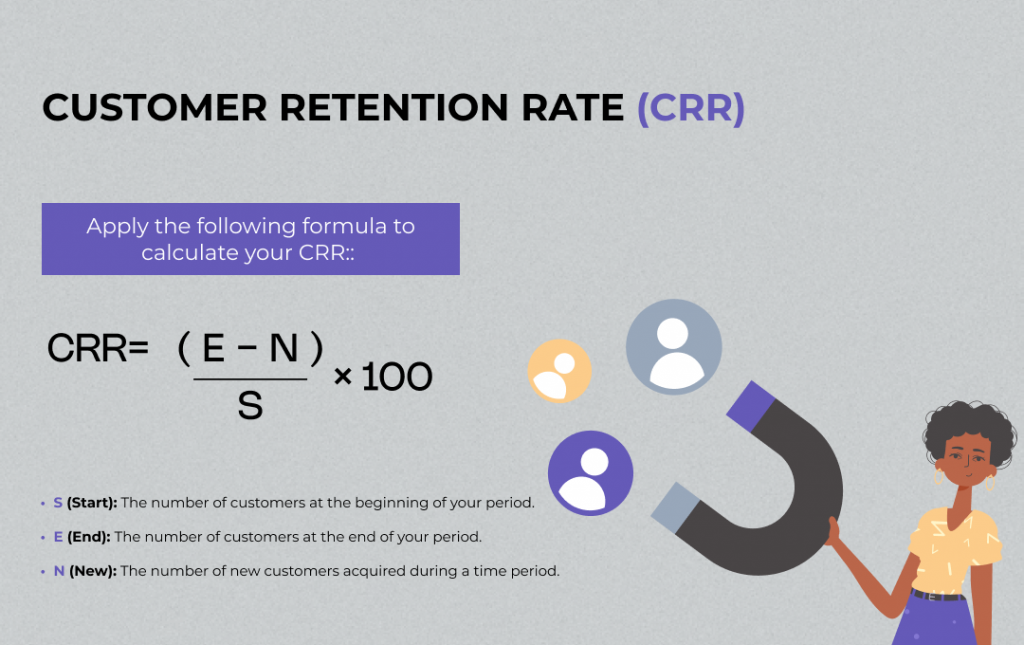
This formula gives you the percentage of customers from the start of the period that you’ve retained by the end. Remember, a high CRR indicates a satisfied, loyal customer base, while a lower rate might signal the need for improved customer engagement or service strategies.
The Role of AI and Data Analytics in Customer Retention
In the modern business landscape, AI and data analytics play a pivotal role in enhancing customer retention strategies and an increase in profit. These technologies offer deep insights into customer behavior, enabling more personalized and effective engagement.
According to Forbes, businesses that use AI and analytics in their customer retention programs are likelier to see an increase in customer lifetime value.
You can utilize AI to analyze customer data and predict future buying behaviors and preferences, segment your customer base for more tailored communication and offers, create personalized experiences, identify at-risk customers, and proactively engage with them to prevent churn.
Tools like IBM Watson, Google Analytics, and Salesforce Einstein provide powerful capabilities for incorporating AI and data analytics into your marketing strategies.
How to Start Personalizing Your E-commerce Store?
Imagine walking into a store where everything feels handpicked just for you. That’s the power of personalization in eCommerce businesses, and it’s a game-changer for connecting with your customers.
Personalization isn’t just a buzzword; it’s a proven strategy backed by statistics and studies to improve customer experience with your brand.
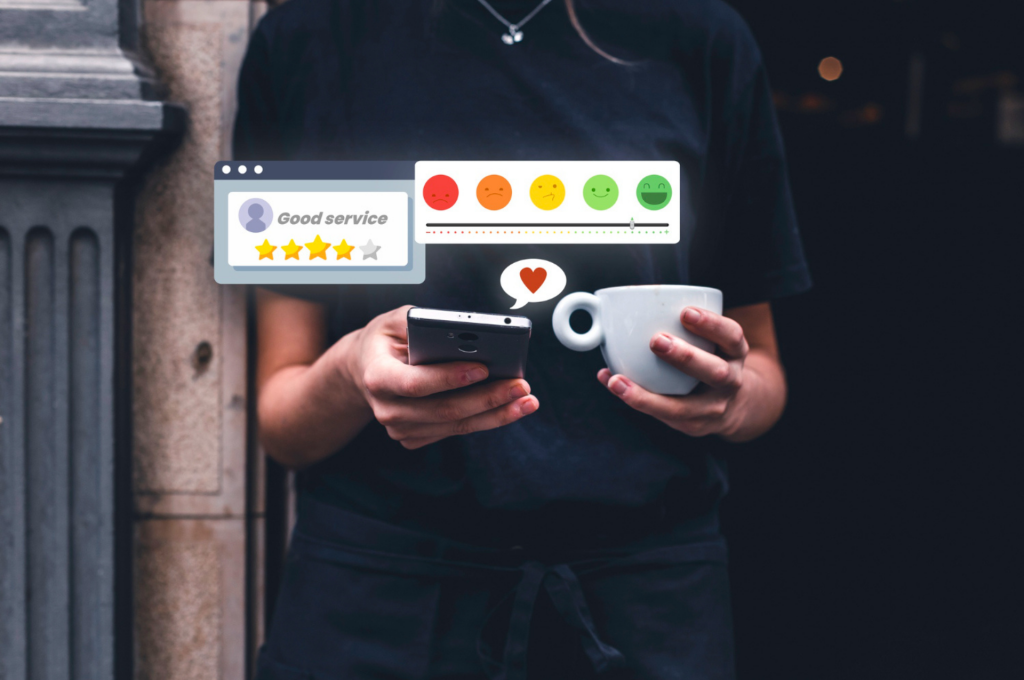
Dive into Data:
Start by getting to know your customers. Dive deep into their purchase history, browsing patterns, and engagement through data analytics tools to gain deep insights into customer behaviors and preferences.
This data is a goldmine for understanding what they love.
For example, a study from McKinsey found that personalization can deliver five to eight times the ROI on marketing spend and lift sales by 10% or more.
Tailored Product Suggestions:
Use smart algorithms like Adobe’s AI-powered recommendation engine or your development team to offer product recommendations that resonate with each customer’s unique tastes.
It’s like being a thoughtful friend who knows exactly what they’re looking for.
This personalization can increase conversion rates, as seen in Amazon’s success with its recommendation system.
Dynamic Website Content:
Make your website a chameleon. Change up banners, deals, and product showcases based on who’s browsing.
Platforms like Optimizely or Adobe Experience Manager can help dynamically change website content, banners, and offers based on user profiles, significantly improving user engagement and conversion rates.
Smart Chatbots:
Implement chatbots that don’t just answer queries but remember past conversations. It’s about providing a consistent, personalized service that makes customers feel heard and valued.
Integrating AI bots like Drift or Intercom can provide personalized customer support, leveraging past interaction data to offer tailored assistance, improving customer satisfaction and retention.
By integrating these personalization techniques, your e-commerce platform can offer a unique and compelling shopping experience.
How to Do a Good Retention Strategy?
Crafting a successful customer retention strategy is vital for any business looking to sustain growth and build a loyal customer base, and it goes beyond merely addressing the challenge of converting one-time customers into regular patrons.
It’s about creating a lasting relationship with your customers, ensuring they return and become advocates for your brand. Keep a close eye on eCommerce metrics’ like Customer Acquisition Costs (CAC).
Remember, getting a new customer is often five times more expensive than keeping an existing one. So, you can create a sustainable business model by focusing on keeping your existing customers happy and engaged.
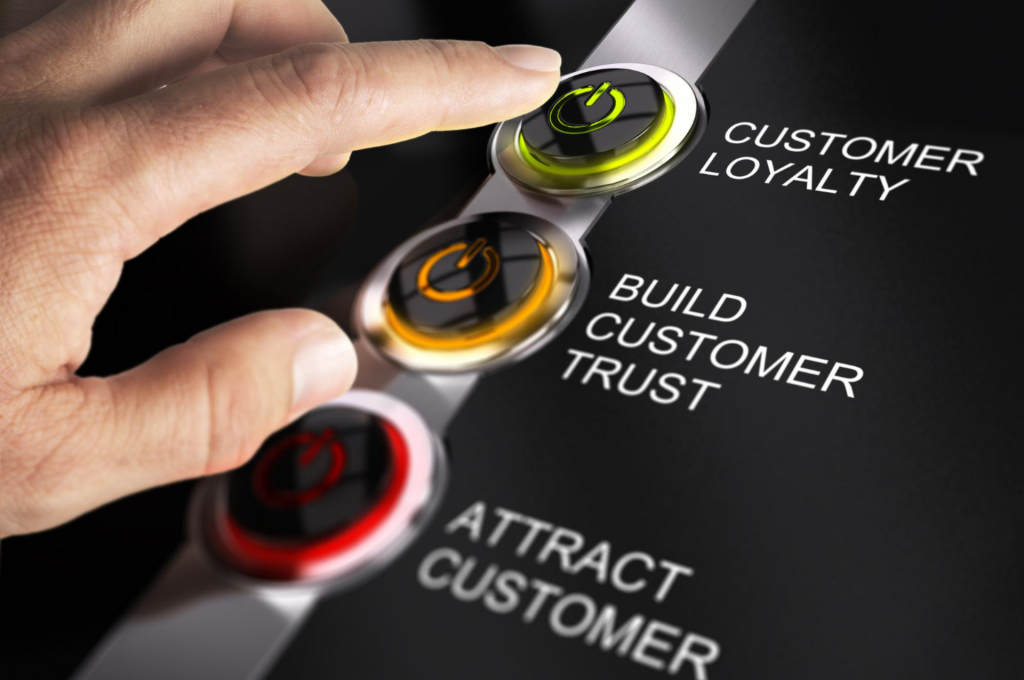
To effectively reduce the influx of one-time customers and smartly retain your existing ones for a long-lasting customer relationship, consider implementing the strategies below:
1º Make They Back with Emails That Speak to Them
Did you know that a good marketing strategy to target your base of contacts, making them regular customers, is email marketing?
Even nowadays, email remains a powerful tool for customer re-engagement with the power to enable increased customer retention.
But how to do this correctly?
Craft email campaigns that call your customers by name, highlight products they can’t resist and offer deals that feel like they’re made just for them.
According to Campaign Monitor, emails with personalized subject lines are 26% more likely to be opened. So, make sure to choose the right email marketing tool like Klaviyo to help you segment your audience and send tailored content based on purchase history and browsing behavior.

Crucial Aspects of Effective Returning Email Marketing
- Customer Segments: Categorize your email list based on customer behaviors, purchase history, and preferences.
- Dynamic Content: Use email marketing tools to tailor the content of emails to individual customers automatically.
- Behavioral Triggers: Send emails based on specific customer actions, like abandoned carts or browsing history.
- Consistent Yet Personalized Communication: Maintain a balance between regular communication and personalization to avoid overwhelming customers.
Example: Amazon’s Personalized Email Strategy: Amazon excels in personalized email marketing efforts. They use customer data to send tailored recommendations and reminders based on browsing and purchase history.
Their emails often include personalized product suggestions, deals related to past purchases, and updates on items of interest, making each email feel individually crafted for the recipient.
2º Loyalty Programs and Incentives to Boost Preference
Customer loyalty programs are not just about rewarding purchases; they are strategic tools for fostering deep connections with customers.
The success of this strategy lies in its ability to make customers feel recognized and appreciated. Rewards for ongoing patronage boost the frequency of purchases and elevate the customer’s journey with your brand, enhancing overall satisfaction.
According to a study by Accenture, members of customer loyalty programs can generate between 12% and 18% more revenue than non-members.
But beyond traditional point systems, consider incorporating unique incentives to connect and reward customers for their repeat business.

These could include exclusive discounts, early access to new sales or services, special events, or unique perks for being a loyal customer.
Crucial Aspects of Effective Loyalty Programs:
- Customized Rewards: Design incentives that align with your customer’s unique preferences and behaviors.
- Exclusive Benefits: Offer loyal customers special perks, like early access to products or members-only events.
- User-Friendly Design: Ensure the program is easy to understand and engage with, encouraging broader participation.
- Regular Communication: Keep customers updated about their rewards and upcoming special offers.
You can develop a program with multiple tiers where customers can earn greater rewards as they move up the levels. Each tier should offer increasingly attractive benefits, encouraging customers to aim for higher levels.
Innovative Example – Starbucks Rewards: A prime example of a successful loyalty program is Starbucks Rewards. This highly personalized program allows customers to earn stars with every additional purchase, which can be redeemed for free drinks, food, and more. Starbucks continually adapts its rewards to keep customers engaged, offering seasonal promotions and exclusive deals for members.
Example of a Successful Real-World Loyalty Program: Another incredible example of a successful e-commerce loyalty program is Sephora’s Beauty Insider program. This program is structured with multiple tiers (Insider, VIB, and Rouge), each offering unique benefits like free makeovers, exclusive events, and early product access. Members earn points for every purchase, which can be redeemed for various rewards.
3º Provide Excellent Customer Service
In today’s competitive online market, exceptional customer service is more than a nice-to-have; it’s a vital differentiator that can make or break customer loyalty.
The impact of excellent customer service is profound. As reported by American Express, 7 out of 10 U.S. consumers say they’ve spent more money to do business with a company that delivers great service.

Excellent customer service is pivotal in retaining happy customers and encouraging repeat business. It’s not just about problem-solving; it’s about creating a positive, memorable customer experience that leads to long-term customer relationships.
Crucial Aspects of Enhanced Customer Service:
- Prompt and Accurate Solutions: Speed and accuracy are critical. Training staff for efficiency and integrating AI tools, utilizing chatbots (e.g., IBM Watson Assistant) for immediate responses to common inquiries can lead to quicker, more accurate responses.
- Personalization in Interactions: Customizing interactions based on customer data can make each customer feel uniquely valued.
- Omnichannel Support: Providing consistent support across various channels such as phone, email, live chat, and social media is essential for modern customer service.
- Continuous Staff Training: Regularly updating the skills and knowledge of customer service teams is key to maintaining high service standards.
- Leveraging Feedback for Improvement: Actively seeking and incorporating customer feedback shows a commitment to constantly improving service quality. Use multiple channels to gather feedback, such as customer satisfaction surveys, social media, email, and direct customer interactions.
Real-World Example: Zappos’ Customer Service: A standout example of excellent customer service is Zappos. Known for their ‘customer obsession’, Zappos empowers their representatives to go the extra mile, leading to legendary service stories.
Their approach includes surprise upgrades, personal follow-ups, and focusing on building emotional connections, not just transactions. Zappos’ commitment to outstanding customer service has become a benchmark in the industry, demonstrating the impact of a customer-first approach.
4º The Vital Role of Regular Communication and Engagement
The effectiveness of regular communication lies in its ability to keep your brand relevant and top-of-mind for your customers. It fosters a sense of community and belonging, essential for long-term customer retention.
A report by Salesforce indicates that 84% of customers say being treated like a person, not a number, is very important to winning their business. Regular, personalized communication helps achieve this, making customers feel valued and understood.
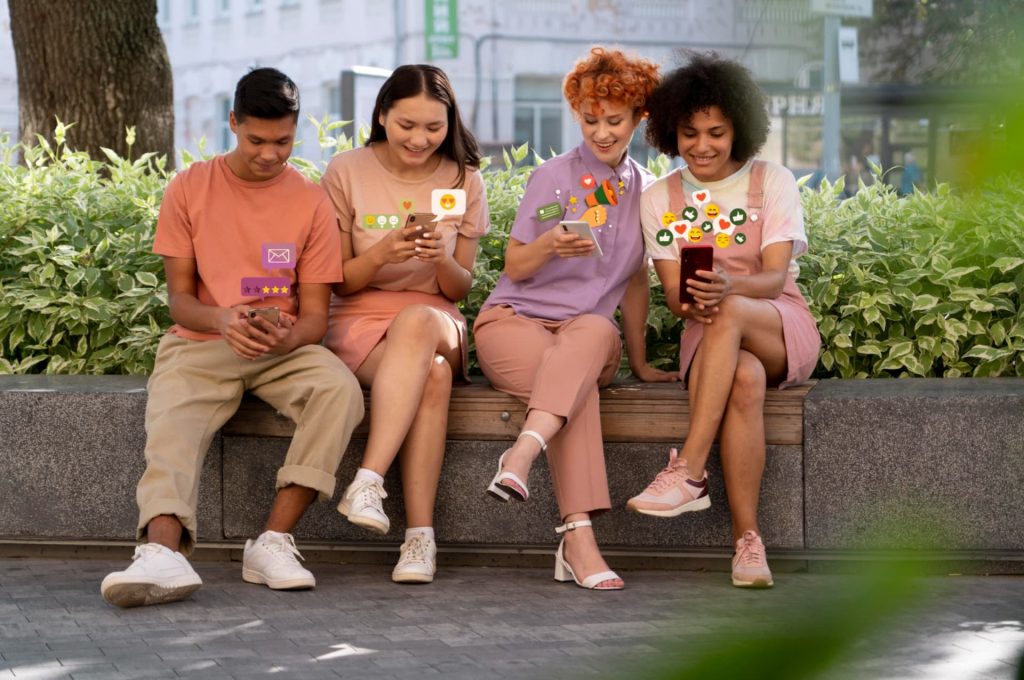
Also, by consistently engaging with your audience, you can gain valuable insights into their preferences, informing your marketing strategies and product development.
Crucial Aspects of Effective Communication and Engagement:
- Consistent Content Delivery: Share informative and interesting information to your audience using a variety of channels like email newsletters, social media updates, and blog posts.
- Interactive Communication: Encourage two-way communication by engaging with customer comments, conducting surveys, and hosting Q&A sessions.
- Personalization: Tailor your communications to address individual customer preferences and behaviors, making each interaction feel unique and personal.
- Feedback Loop: Create opportunities for customers to provide feedback and show that you are listening and making changes based on their input.
Innovative Example – Netflix’s Personalized Communication:
Netflix excels not only in personalized content recommendations but also in its unique and engaging approach to social media interactions. They frequently respond to comments on their posts with a brand-consistent tone of voice that is witty, engaging, and often humorous. This approach to interaction demonstrates a deep understanding of their audience and helps to build a stronger, more relatable brand presence.
Also, their platform uses sophisticated algorithms to understand user preferences and viewing habits, enabling them to send highly personalized email recommendations and in-app notifications.
Bonus – Measuring and Analyzing Retention Efforts
Successfully retaining customers isn’t just about implementing strategies, measuring their effectiveness, and continuously refining your approach. Regular analysis of retention efforts is crucial for understanding what works and needs improvement in your marketing efforts.
The significance of measuring customer retention is backed by data. A study by Bain & Company indicates that increasing customer retention rates by 5% increases profits by 25% to 95%. This underlines the direct impact of effective retention strategies on a company’s bottom line.

Essential methods for measuring and analyzing retention include:
- Customer Retention Rate (CRR): Calculate your CRR regularly to get a clear picture of how well you’re retaining customers over a specific time period.
- Customer Lifetime Value (CLV): Analyzing CLV helps understand the total value a customer brings over their relationship with your brand.
- Net Promoter Score (NPS): Utilize NPS surveys to gauge customer satisfaction and loyalty, which is indicative of retention likelihood.
- Churn Rate Analysis: Keep track of your churn rate to identify how many customers are leaving and at what stage.
Tools like Google Analytics, Kissmetrics, or Mixpanel can be invaluable in tracking these metrics and providing insights into customer behavior and retention patterns.
Innovative Example – Spotify’s Data-Driven Retention Strategy: Spotify analyzes and improves customer retention. They use advanced analytics to track user engagement, preferences, and listening habits. This data informs their personalized playlists and recommendations, enhancing user satisfaction and engagement.
Spotify’s approach of using data-driven insights to tailor the user experience has been instrumental in maintaining a high retention rate, showcasing the power of effective measurement and analysis in customer retention strategies.
The Key to Sustained Business Growth
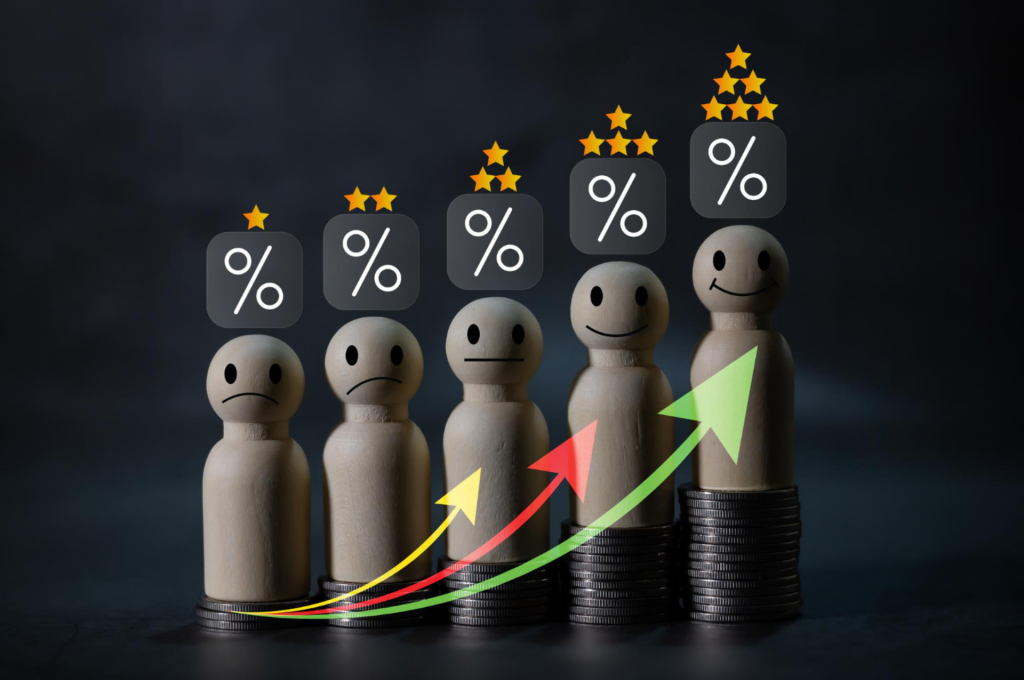
Mastering customer retention is the cornerstone of sustained growth and success in today’s competitive business environment.
The strategies and insights discussed throughout this article are not just theoretical concepts; they are practical, actionable steps that can transform how businesses interact with their customers, fostering lasting relationships, driving loyalty, and increasing your customer’s purchase frequency.
Remember, the cost of retaining an existing customer is significantly lower than acquiring a new one. Therefore, investing in customer retention strategies is not just a smart move; it’s an essential aspect of a sustainable business model.
By focusing on personalized engagement, leveraging AI and data analytics, and continuously adapting to customer feedback, businesses can increase lifetime value and turn customers into brand advocates.

